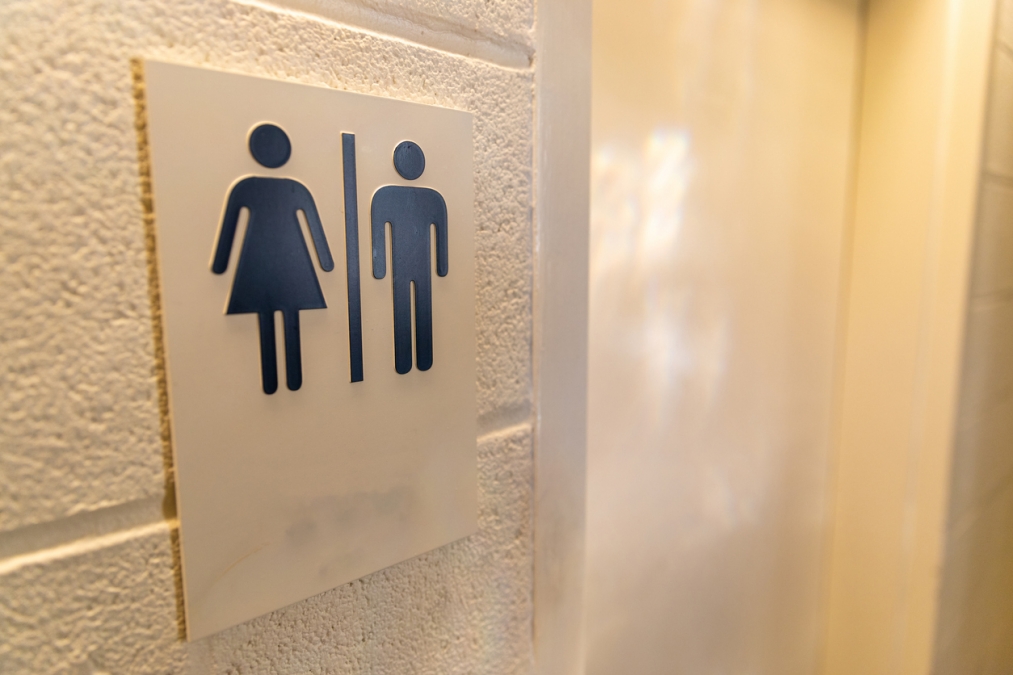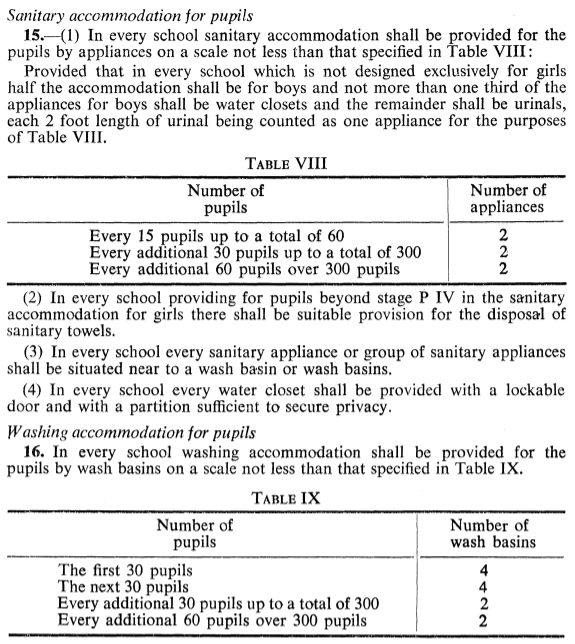School Toilets

Despite clear legislation on the requirement to provide single-sex toilets in schools many local authorities across Scotland are replacing these with mixed-sex (gender-neutral) facilities, often without prior consultation with pupils or parents. This is unlawful and if your child’s school has introduced mixed-sex toilets, here’s the information you need to tackle the school about it.
The Building standards technical handbook 2022: non-domestic provides guidance for disabled/accessible toilets and states that, other than this, sanitary facilities in schools should be provided in accordance with the School Premises (General Requirements and Standards) (Scotland) Regulations 1967. This law gives a minimum number of appliances dependent on total pupils on the school roll and mandates that half the accommodation shall be for boys and the other half for girls. There is no provision for unisex, mixed-sex or gender-neutral facilities within that number.
The Equality and Human Rights Commission (EHRC) recently published its own guidance Separate and single-sex service providers: a guide on the Equality Act sex and gender reassignment provisions, which clarifies that protecting girls’ privacy, dignity and safety are quite legitimate aims for providing single-sex spaces such as toilets and changing rooms in schools, and advises on the need to take into account other legislation (such as the School Premises Regulations).
The decision in our most recent judicial review (currently under appeal) states that “sex” in the Equality Act is not limited to biological or birth sex, but includes those in possession of a Gender Recognition Certificate (GRC) stating their acquired gender. Children of school age are not eligible to apply for a GRC so any legal arguments about how GRCs are viewed for the purposes of the Equality Act are not applicable here. Pupils remain of their birth sex and should be treated as such under the Equality Act.
Pupils may hold the protected characteristic of gender reassignment, but the right not to suffer discrimination on these grounds is not the same as a right of access to facilities provided to the opposite sex. Where separate-sex facilities have been provided, boys, regardless of how they identify, have no right of access to the girls’ facilities (and vice versa).
Of course, if a child does not feel comfortable – for whatever reason – in using the toilets provided for his/her sex, there is scope to make suitable alternative arrangements which do not infringe on the rights of others to single-sex provision. For example, there is no restriction on providing self-contained individual gender-neutral toilets in addition to the minimum number of separate-sex toilets.
A recent legal opinion from Aidan O’Neill KC concluded that there is an enforceable requirement for local authorities to provide separate toilets for boys and girls under their legal obligation to prohibit harassment related to the pupils’ sex and which can be perceived by pupils as having the effect either of violating their dignity or of creating an intimidating, hostile, degrading, humiliating or offensive environment for them (Equality Act, schedule 3, s26 and s85(3)).
We wrote to all 32 local councils across Scotland in June 2022 requesting they review school buildings and policies to ensure single-sex toilets are provided for pupils in line with their legal obligations in the Equality Act. The full written legal opinion was also enclosed. A copy of the letter and summary of the legal advice can be seen here: Schools must provide single-sex toilets.
Please contact us if you reach the end of the school complaints process and wish to take further action. We believe there are strong grounds to pursue a legal case and are happy to share the full legal opinion.

